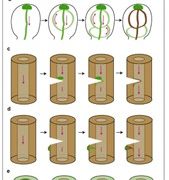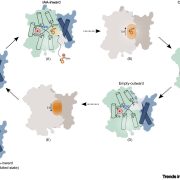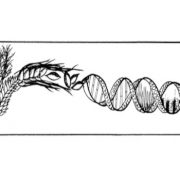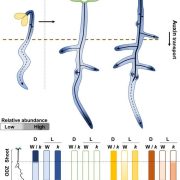Altering root system architecture in barley without impacting above-ground traits
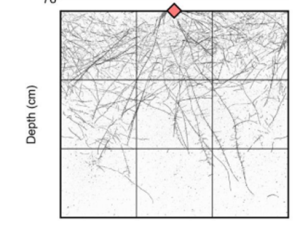 Roots are important for acquiring water and nutrients from the soil; however root system architecture is poorly understood in cereal crops. Here Aldiss et al. used CRISPR/Cas9 to generate barley mutants in the auxin transporter PIN-FORMED2 (PIN2). Seedlings were grown in chambers and after four days the chambers were rotated by 90o. Whilst the roots of wild type plants grew towards the gravity vector, the roots of mutant plants did not, suggesting they were agravitropic. To look at the root system architecture of more mature plants, the mutants were grown in wide rhizoboxes for 28 days. Analysis of the root system using the image analysis software RhizoVision Explorer showed that pin2 plants had a wider root system and more shallow roots, defined as having a root angle of less than 30o. Interestingly, pin2 plants had no significant difference in shoot biomass and no differences in either tiller number or time to flowering. Hence mutating PIN2 provides a way of generating a wide, shallow root system in barley without compromising above ground traits, which could be beneficial for capturing phosphorus or water from the topsoil. (Summary by Rose McNeilly @Rose_McN) bioRxiv 10.1101/2024.03.28.587117v1
Roots are important for acquiring water and nutrients from the soil; however root system architecture is poorly understood in cereal crops. Here Aldiss et al. used CRISPR/Cas9 to generate barley mutants in the auxin transporter PIN-FORMED2 (PIN2). Seedlings were grown in chambers and after four days the chambers were rotated by 90o. Whilst the roots of wild type plants grew towards the gravity vector, the roots of mutant plants did not, suggesting they were agravitropic. To look at the root system architecture of more mature plants, the mutants were grown in wide rhizoboxes for 28 days. Analysis of the root system using the image analysis software RhizoVision Explorer showed that pin2 plants had a wider root system and more shallow roots, defined as having a root angle of less than 30o. Interestingly, pin2 plants had no significant difference in shoot biomass and no differences in either tiller number or time to flowering. Hence mutating PIN2 provides a way of generating a wide, shallow root system in barley without compromising above ground traits, which could be beneficial for capturing phosphorus or water from the topsoil. (Summary by Rose McNeilly @Rose_McN) bioRxiv 10.1101/2024.03.28.587117v1



